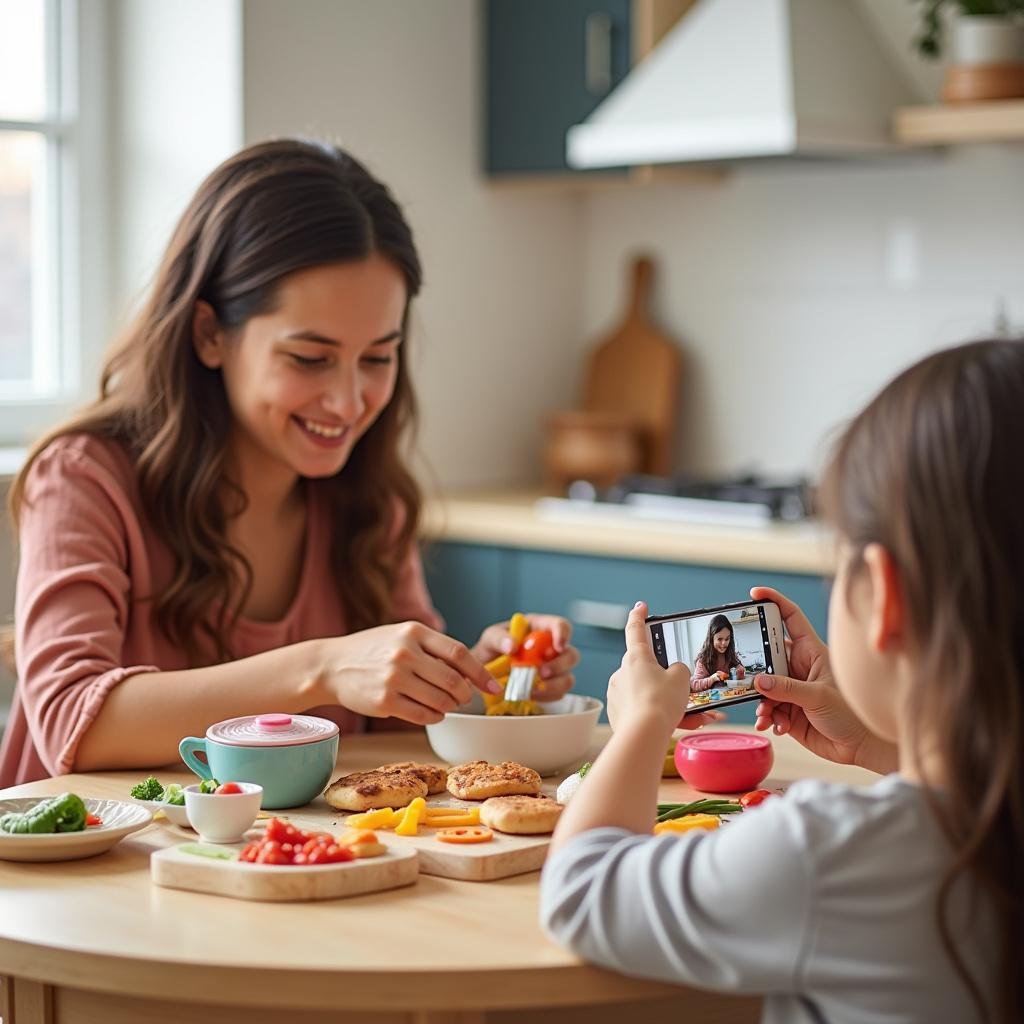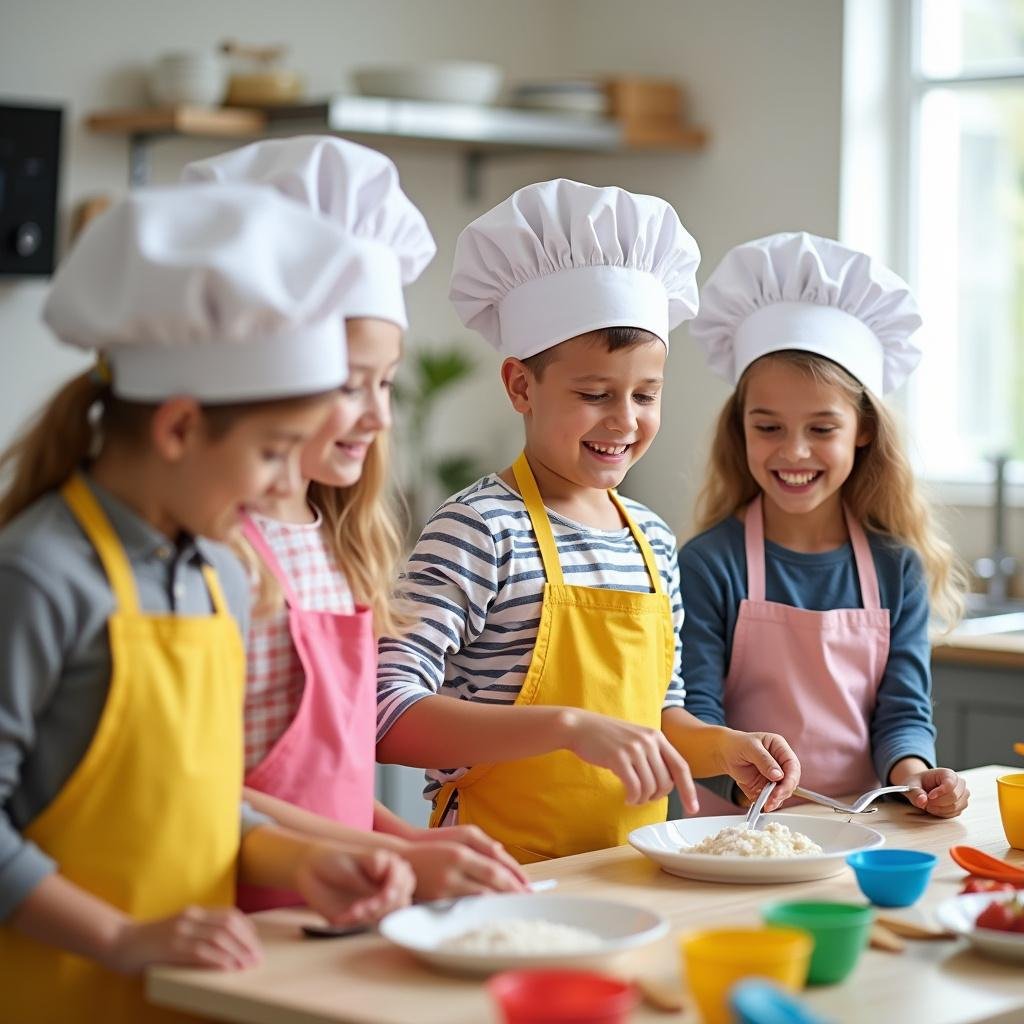1. Introduction
Engaging in cooking games with kids in the kitchen is not only a delightful way to bond but also an excellent method to stimulate their creativity, enhance essential life skills, and foster healthy eating habits. These activities turn the kitchen into an exciting learning environment where children can participate safely while having fun. Incorporating the best kw cooking games can transform everyday mealtime into an educational adventure, making your time in the kitchen both productive and entertaining. Whether you’re a parent looking for educational activities or a caregiver aiming to introduce children to culinary arts, these games provide numerous benefits, including improved motor skills, teamwork, and understanding of nutrition. For comprehensive guidance on kid-friendly dinner ideas that are both nutritious and fun, explore our article on kid-friendly dinners that don’t look like kid food and make your kitchen adventures even more enriching.

2. Why Choose the Best Cooking Games to Play with Kids in the Kitchen?
Choosing the best kw activities ensures children participate in safe, engaging, and educational experiences. These games should seamlessly blend fun with learning, encouraging kids to experiment with ingredients and practice kitchen skills in a secure environment. Properly selected activities can also introduce children to vital concepts such as measuring, following steps, and understanding food origins—an essential part of developing healthy habits and culinary independence. Incorporating high-quality tools like a Crock-Pot 7 Quart Oval Manual Slow Cooker or a Ninja Air Fryer Pro 4-in-1 makes the cooking process easier and more enjoyable for young chefs. By focusing on the best kw, you create a safe, stimulating environment that nurtures their curiosity and culinary confidence.
3. Top 5 Cooking Games to Play with Kids in the Kitchen
Game 1: Ingredient Sorting and Matching
Start with a simple game where children sort and categorize ingredients such as fruits, vegetables, or grains. This enhances their vocabulary and recognition skills while teaching about food groups. Using vibrant, plastic food sets or real ingredients can make this activity more engaging—try integrating essential tools like Ninja SLUSHi with RapidChill Technology to keep ingredients fresh during the game. Sorting not only boosts cognitive development but also prepares kids for more complex cooking tasks later on.
Game 2: Toy Kitchen Role-Playing
Encourage imaginative play with a mini pretend kitchen where children can act out cooking scenarios using toy utensils and food. This helps develop social skills, language, and fine motor control. For a more realistic experience, incorporate durable toy sets that mimic real appliances. Tools like a KitchenAid Classic Series Mixer can inspire pretend baking sessions, making activities more immersive and educational.
Game 3: Simple Measuring and Mixing
This game introduces basic culinary techniques by allowing kids to measure ingredients for recipes like smoothies or dough. Using kid-friendly measuring cups and spoons along with a Ninja Blender Mega Kitchen System supports their understanding of ratios and precision. Practicing these skills also reinforces math concepts in a hands-on way, setting a foundation for more advanced cooking lessons.
Game 4: Decorate and Plate
Foster creativity by letting kids decorate their dishes with toppings or arrange them artistically on plates. Creative decorating boosts their artistic skills and pride in their culinary creations. Consider using a set of JoyJolt Glass Storage Containers if you want to organize toppings and decorations for easy access, making the activity more organized and enjoyable.
Game 5: Time-to-Cook Challenge
Turn cooking into a friendly competition where kids follow recipes and see who completes tasks faster or more accurately. This emphasizes time management, sequencing, and teamwork. Incorporate magnetic timers or smart kitchen appliances to add excitement. For instance, using a Fullstar Vegetable Chopper can help kids chop ingredients efficiently, making the challenge more dynamic and fun.
4. Tips for Safe and Enjoyable Cooking Games with Kids
- Ensure safety first: Always supervise children during cooking activities and choose age-appropriate utensils. Using a stand mixer or slow cooker like the Crock-Pot minimizes hazards.
- Create a clean and organized workspace: Keep utensils and ingredients within easy reach and ensure surfaces are sanitized for a safe experience.
- Emphasize hygiene: Teach kids to wash hands thoroughly and keep their workspace tidy to prevent cross-contamination.
- Encourage teamwork and sharing: Promote cooperation by assigning different roles, making the experience collaborative and fun for everyone.
- Make it educational: Use each activity to introduce lessons on nutrition, food origins, and sustainable cooking practices.
5. FAQs About Cooking Games to Play with Kids in the Kitchen
What are the benefits of playing cooking games with kids?
Cooking games help children develop fine motor skills, understand the basics of nutrition, and learn valuable kitchen techniques. They also promote creativity, teamwork, and self-confidence as children see their culinary efforts come to life. Moreover, these activities foster a positive attitude towards healthy eating and food preparation, making learning about nutrition both fun and memorable.
At what age can kids start playing cooking games?
Children as young as 2 years old can participate in simple activities like decorating or sorting ingredients. More structured games involving measuring and mixing are ideal for kids over age 4, especially when supervised closely to ensure safety.
Are cooking games safe for young children?
Yes, with proper supervision and the use of child-friendly tools and ingredients, cooking games are safe and enjoyable. Always avoid hot surfaces and sharp objects when working with very young children, and keep safety as the top priority.
How do I make cooking games educational?
Embed lessons on nutrition, the food supply chain, and cooking techniques into each game. Use visual aids, storytelling, and vocabulary cards to explain concepts. For example, while decorating baked goods, discuss healthy toppings or the importance of portion control.
Can I adapt cooking games for children with special needs?
Absolutely. Modify activities to suit individual abilities, incorporate sensory-friendly tools, and provide step-by-step guidance. Using visual schedules or adaptive utensils can help ensure all children participate meaningfully while enjoying the cooking experience.
Playing cooking games to play with kids in the kitchen transforms everyday cooking into a fun, educational, and memorable activity. It not only builds essential skills but also nurtures a lifelong appreciation for food and health. Start experimenting today and watch your little chefs flourish!


1 thought on “Cooking Games to Play with Kids in the Kitchen”